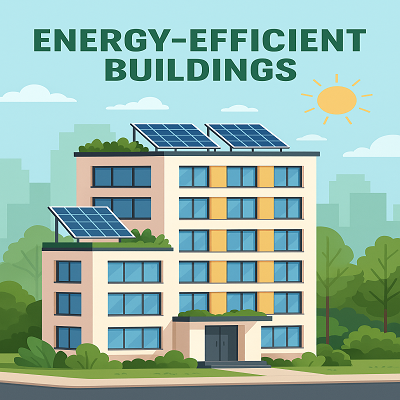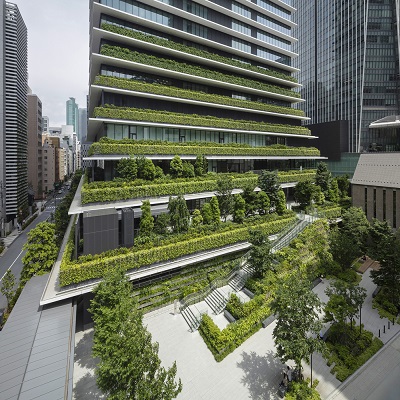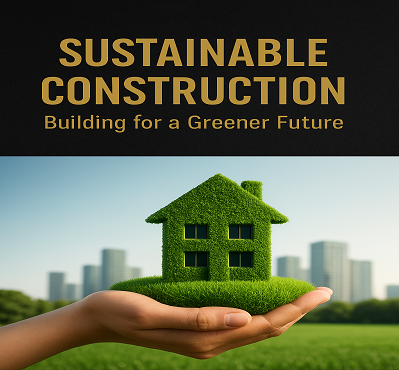Energy-Efficient Buildings

Energy-Efficient Buildings: Reducing Costs and Carbon
Introduction
Energy-efficient buildings are designed to reduce energy consumption and optimize performance while ensuring comfort, health, and safety for occupants. According to the International Energy Agency (IEA), buildings account for nearly 30% of global energy consumption and 28% of energy-related CO2 emissions.
Key Strategies
Insulation – Proper insulation reduces the need for heating and cooling.
2. High-performance windows – Triple-glazed and low-emissivity windows reduce energy loss.
3. Smart HVAC systems – Programmable thermostats and variable-speed systems increase efficiency.
4. LED lighting – Energy-saving and long-lasting lighting solutions.
5. Renewable energy – Solar panels and geothermal systems to power buildings.
6. Building orientation – Maximizing natural light and ventilation.
Benefits
Energy-efficient buildings reduce utility bills, carbon footprint, and improve occupant well-being. Studies show that energy-saving designs can reduce energy use by up to 50%. They also help meet green building standards like LEED, EDGE, or Energy Star.
Examples Worldwide
The Bullitt Center (Seattle, USA) – Net-zero energy office building.
2. Pixel Building (Melbourne, Australia) – First carbon-neutral office in Australia.
3. Reichstag Building (Berlin, Germany) – Renovated with solar and energy-efficient systems.
Challenges
High initial costs for retrofitting or new high-performance systems. Lack of skilled professionals in some regions. Resistance to change in traditional construction practices.
Conclusion
Investing in energy-efficient buildings is not only environmentally responsible but also economically smart. As regulations tighten and energy prices rise, efficient buildings offer long-term value and sustainability.
References
International Energy Agency (IEA). (2022). World Energy Outlook.
2. US Department of Energy. (2021). Energy Efficiency Trends in Buildings.
3. World Green Building Council. (2022). Global Market Report.





